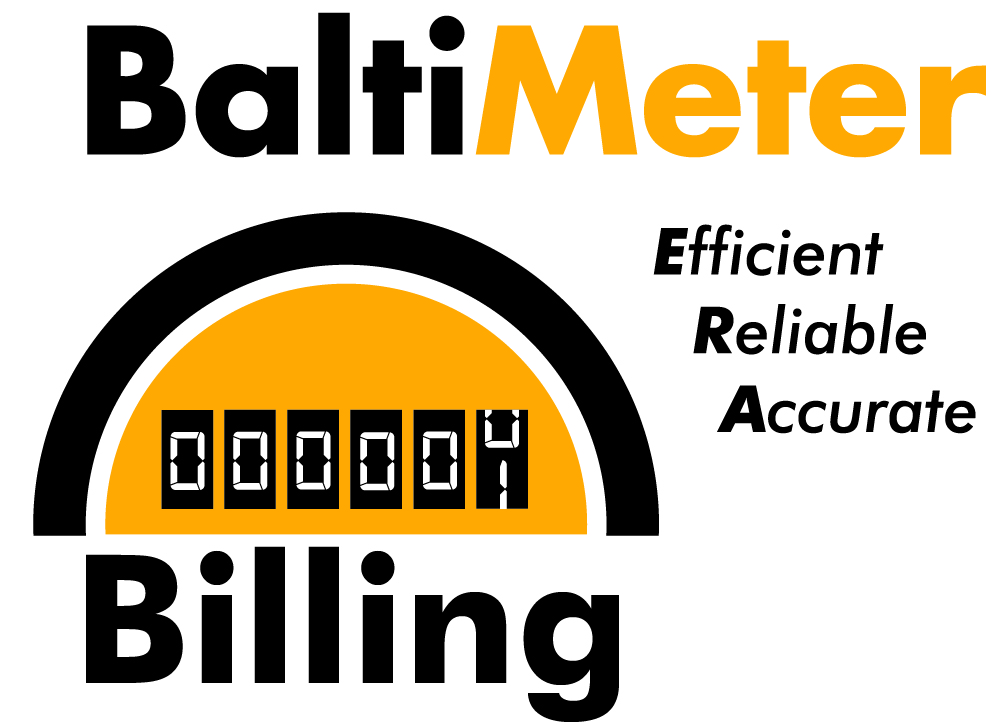

 In October 2016, the Department of Public Works (DPW) started BaltiMeter Billing, a new water and sewer billing system that enhanced DPW's infrastructure and helps to ensure customers receive efficient and reliable billing services. The below information affects only City customers at this time. Baltimore County is expected to begin in 2017.
In October 2016, the Department of Public Works (DPW) started BaltiMeter Billing, a new water and sewer billing system that enhanced DPW's infrastructure and helps to ensure customers receive efficient and reliable billing services. The below information affects only City customers at this time. Baltimore County is expected to begin in 2017.
Click Below to Watch the New Billing System Video
Click Each Item Below for More Information
Understanding the New Monthly Water Bill
Newly Approved Rate Adjustment Calculator (Baltimore City Customers Only)
New Water Billing System Fact Sheet (Download)
Pay Your Water Bill On-Line
Why is a new billing system needed?
• The old, 1980s-era billing system does not produce a customer-friendly bill format. BaltiMeter Billing offers customers an easy-to-read MONTHLY bill that clearly shows how much water is used, how much money is owed, and other useful information.
• In addition to a new bill format, the billing cycle will change from quarterly to monthly. Monthly billing makes it easier for customers to manage household budgets, detect leaks sooner, and find opportunities to adjust household water usage
• Monthly bills will now only be based on how much water you use, not a minimum, and will clearly show each cost your bill covers. Including the fixed cost, you already pay for account management and infrastructure investment.
• As water conservation initiatives have grown and the importance of customer service through different channels has been emphasized, most water utilities are moving to monthly billing and the inclusion of fees for administration and infrastructure.
• An Account Management Fee helps pay for the cost of administering your account, and an Infrastructure Fee helps pay for the cost of upgrading our aging pipes and plants. Under the old billing system, these fixed costs were included in the quarterly water and sewer rates.
• The Stormwater Fee and Bay Restoration Fee will also be billed in monthly amounts, rather than quarterly.
• The conversion to the modern BaltiMeter Billing system provides customers the ability to see daily household water and other account information online. Each property owner will receive an individual password to log in to their secure online account.
• By having more information regarding their water consumption, customers will have more control over their water usage and expenses.
• Please view the “Understanding Your New Water Bill” document for an example of what your bill will look like.
Frequently Asked Questions.
How is the billing system related to the new meter I received?
The new meters are outfitted with technology that can collect and transmit hourly and daily usage data. Customers can use this information to make better decisions about water consumption and conservation.
Will financial assistance programs still be available?
Yes. View the hardship programs for low-income senior citizens and other customers that will remain for City customers. City or County customers who need help to catch up on bills will also still be able to apply for payment plans. In fact, DPW is expanding options for payment plans.
What happens to my current payment plan?
Customers on payment plans will see more detailed information about their payment plan on their monthly water bills.
Will I be able to pay my bill online?
Yes. Customers who wish to pay their bill online may do so by going to Baltimore City’s Bureau of Revenue Collections website
Will I have the same account number?
No. Your account number will change and you will see this new number on your first monthly bill. You will need this account number to pay your bill.
Will I be charged for late payments?
Yes. Customers must make a payment by the due date on the bill to avoid a late fee.
Am I able to receive my bill electronically?
Not at this time. You will be able to view your bill online through the customer portal. Customers will still be mailed paper bills.
What other improvements are being made for customers?
Replacing or rehabilitating at least 15 miles of water mains each year to improve reliability
Rebuilding our sewer system to reduce overflows and backups
Upgrading our wastewater treatment plants to even better protect our environment
Improving our finished water reservoirs to protect our high-quality drinking water
Implementing programs and projects to reduce the volume and improve the quality of stormwater runoff